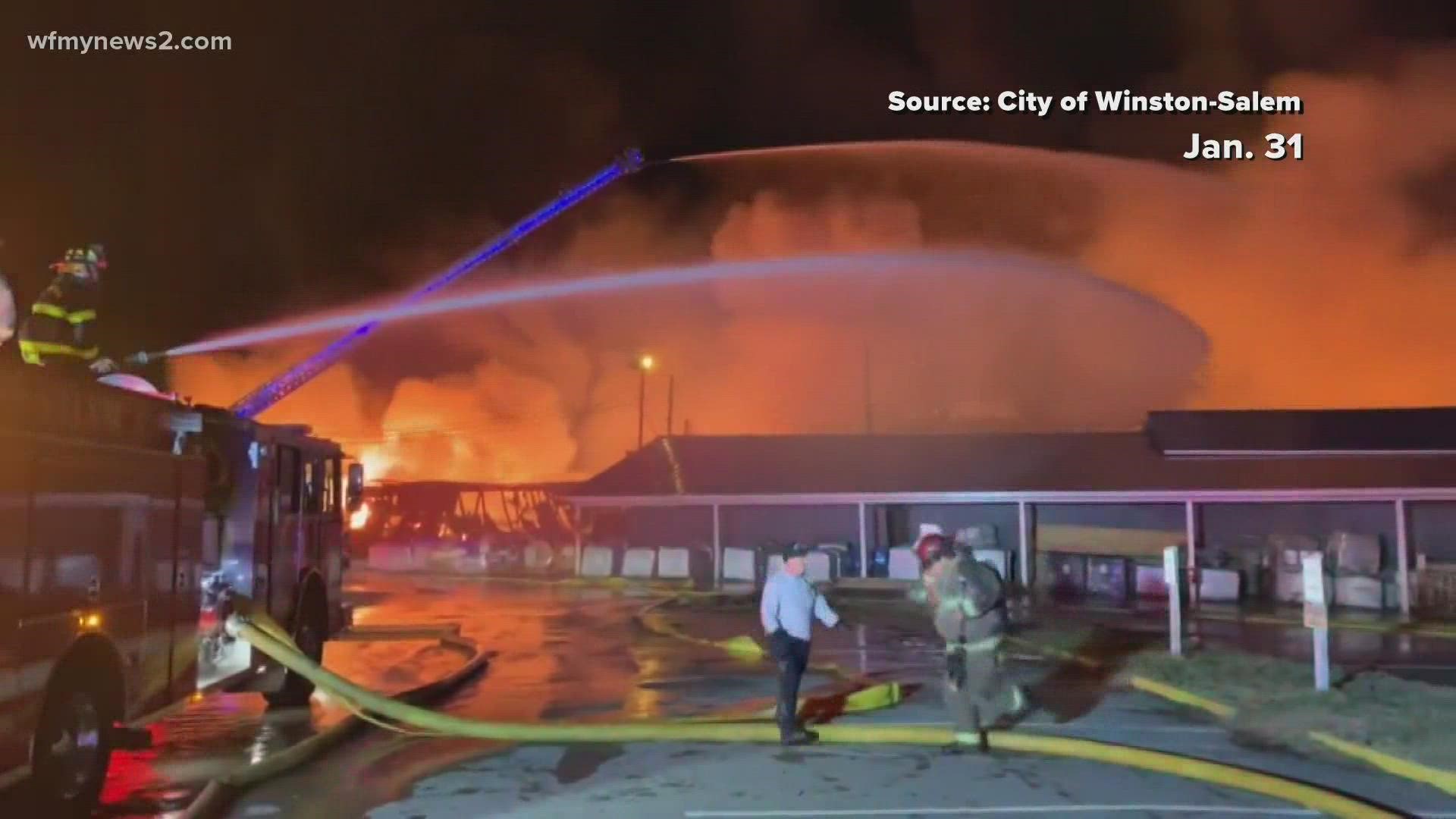WINSTON-SALEM, N.C. — Families returned home after a chemical fire at the Winston Weaver fertilizer plant burned for three nights. Now, officials turn their efforts toward the investigation. Here’s what we know in the aftermath of the fire and what’s next.
Families can go home
Winston-Salem fire officials said they will reduce the one-mile evacuation radius down from 660-feet to 275-feet Sunday at 8 p.m.
Officials said North Cherry Street will remain closed from North Point Boulevard to Progress Lane. Adjacent businesses on North Cherry Street can be accessed from Indiana Avenue.
The smaller evacuation radius only contained a few commercial businesses as of Friday. The Red Cross closed its shelter at the Winston-Salem Fairgrounds Friday. Here’s what you need to know if you’re returning home after the fire.
Air quality
The Forsyth County Office of Environmental Assistance and Protection (FCEAP) is forecasting ‘good’ air quality for Friday and through the weekend. The air quality index is below 50, meaning air pollution poses little or no risk. For the past few days, the air quality remained at ‘moderate’, and officials advised those with breathing problems to stay inside.
FCEAP officials said Friday they are continuing to monitor the fire at Weaver Fertilizer.
“While fire suppression activities have continued and are making significant progress in extinguishing the fire and air quality conditions are improving, a smoke plume from the fire will continue to impact local air quality until the fire is completely extinguished,” read a statement from the FCEAP.
Environmental officials recommend people avoid outdoor activity in and near the smoke plume, especially children, and adults with compromised respiratory conditions including asthma and COPD.
Officials will give updates, as needed, until local impacts to air quality subside.
The investigation
We still don’t know what caused the fire, but now that firefighters have been able to return to the plant, the investigation on the ground can begin.
The fire started the night of Monday, Jan. 31. Several 911 calls started coming in around 6:45 p.m. from people reporting smoke and flames coming from the building on North Cherry Street.
Assistant Fire Marshal Rick McIntyre, who is the lead investigator on the Weaver fire, said one of the first 911 calls came in from a worker who was at the plant. No other workers were inside. The worker who called 911 was able to get out unharmed. Officials haven’t released any 911 calls to the public.
McIntyre said a 12-person task force is handling the investigation. The team includes members from the SBI and ATF; McIntyre said that is typical in large-scale fires.
Investigators are conducting interviews, surveying the damage on the ground, and reviewing drone footage. McIntyre said they are still collecting information on whether Weaver has tried to update its facility. He said it gets annual inspections because it holds so many chemicals used for making fertilizer. Officials said the Weaver plant had around 600 tons of ammonium nitrate inside when the fire started - nearly three times the amount a Texas plant had when it exploded in 2013, killing 15 people.
McIntyre didn’t have a timeframe for when they might be able to determine a cause, saying it could be complicated due to the extent of the damage.
The building’s history
The Winston Weaver plant is 80 years old and passed inspection in December of 2021.
McIntyre explained the plant was built before the city was built around it. He said because the building is much older, it only has to meet the code standards of its time.
McIntyre said the codes of today are much more thorough when it comes to chemical storage.
Winston-Salem Fire Chief Trey Mayo said the plant did not have a sprinkler system. He said based on history, a two-sprinkler system could have likely contained the blaze.
City warns of elevated chemical levels in creeks
City of Winston-Salem officials are warning people to stay out of muddy, mill and monarcas creeks downstream from the Winston Weaver fertilizer plant.
The warning came five days from the start of a fire at the plant.
Officials are warning the public to keep pets and other animals out of the creeks due to elevated levels of chemicals in the water resulting from the fire.
City officials said ingesting the water could be harmful to your health and said samples from a stormwater pipe of water runoff from the site found elevated levels of nitrites, nitrates, ammonia nitrogen and other potentially harmful chemicals.
According to the City of Winston-Salem, the pipe empties into Monarcas Creek south of North Point Boulevard. Officials said they observed a fish kill along Monarcas Creek from the storm drain outfall to the creek’s confluence with Mill Creek.
City officials said because Mill Creek flows into Muddy Creek, the advisory includes downstream portions of Muddy Creek.
The city is working with state officials to make sure water quality notices are posted along the affected portions of the creeks. In the meantime, it has posted an alert on its social media accounts and on the city website.
“Officials cannot predict how long it will take for the water quality to improve. It will depend upon the weather and other factors,” the city wrote in a news release.

